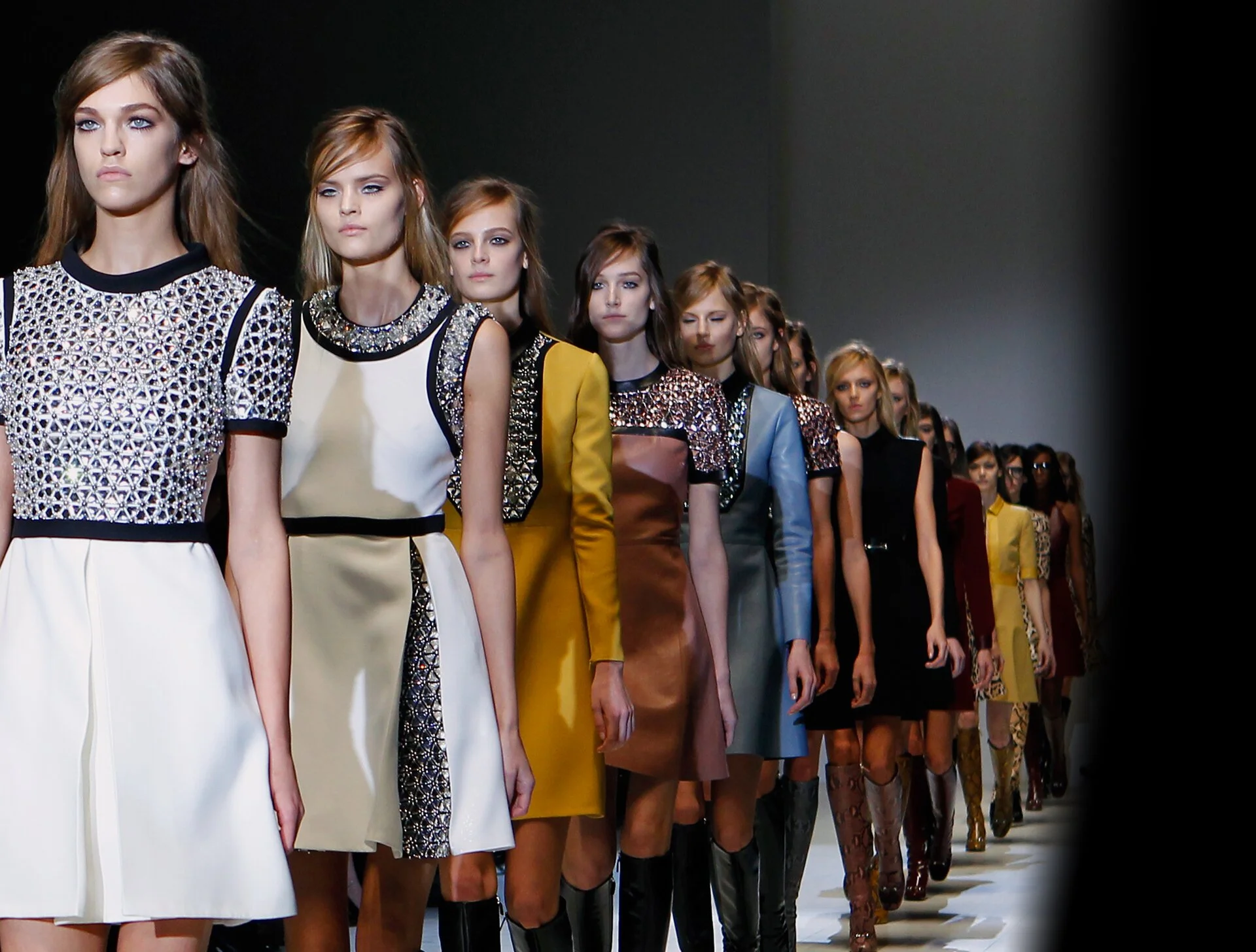Is Fashion Aging Gracefully?
Yes, body-con dresses with the Moschino logo rendered in Barbie-esque font plastered across the rear are a sure-fire way to make a statement. And who doesn't want to don a shimmery Saint Laurent mini skirt and go dancing? While the growing number of high fashion designers with their finger on the pulse of youth culture (Jeremy Scott for Moschino or Olivier Rousteing for Balmain, for example) is a refreshing shift from the old guard glamor of 1990s couture, these fashion statements have a definitive expiration date. In other words, not many women over their mid-20s are going to opt for an Alexander Wang tube top when deciding what to wear to work in the morning.
While fashion magazines are quick to identify the best trends for your 30s, 40s or 50s, in reality, the body ages in ways fashion often overlooks or isn't willing to publicly acknowledge. Take our current fixation with athleisure (athletic clothes that can pass for work clothes or evening wear) for example. Although this trend is undeniably convenient and a nice excuse to wear leggings day in and day out, it's not a feasible lifestyle choice for the average working woman who wants to present herself in a professional manner.
Dolce and Gabbana's Spring 2015 campaign; image via
On the surface, most fashion brands also appear to design exclusively for young women, as reflected in their use of popular models and actresses as spokeswomen and muses. While some designers have featured older women in past campaigns, such as Joan Didion for Celine, Iris Apfel for Kate Spade or Dolce and Gabbana’s effervescent grannies, the shock that accompanied the unveiling of these campaigns is indicative of fashion’s default preference of youth. While it should be considered normal to see women of all ages featured in ad campaigns that are indicative of the consumer market as a whole, a young face is the overwhelming preference, and for obvious reasons. It's easy to blame designers for propping up beautiful women in their teens and 20s as their poster girls, but these marketing moves are entirely dependent on buyer preference. Consumers simply respond better to a youthful image; we are almost naturally inclined to place value on whatever or whomever is the newest, shiniest toy in the box. In other words, we as consumers have collectively and almost subconsciously conditioned ourselves to idolize standards of beauty that aren't sustainable in the long term.
Brands cultivate their public personas in accordance to the demands of a younger audience for good reason, however. Although older customers have the financial means to support a brand, they are not necessarily their most vocal consumers. The youth populations fixation with celebrity and their adeptness at social media help to generate substantial buzz outside of a collection's typical runway presentation and campaign press release. Take for example Balmain's choice to use Kendall Jenner as the brand's current face. Although the explosion of KendallxBalmain hashtags over Instagram feeds or the Twittersphere may seem inconsequential, social media's impact elevates a given campaign or trend to a extent that traditional advertising does not.
Jean Paul Gaultier's final collection; image via
So what's the solution? For the most part, fashion's advertising formula thus far seems to have worked in its favor, despite catering to a very specific audience on the surface. It appears as if a movement from the consumers themselves towards a more inclusive image of fashion is necessary to change this status quo. If we normalize the notion that beauty is not confined to a certain age group, we will likely see a shift in fashion media, image and advertising as a whole as well. Besides, choosing poster girls who have a distinct voice, experience or legacy could allow fashion labels to make much stronger statements about their creative vision and desired cultural impact.
Featured image via








